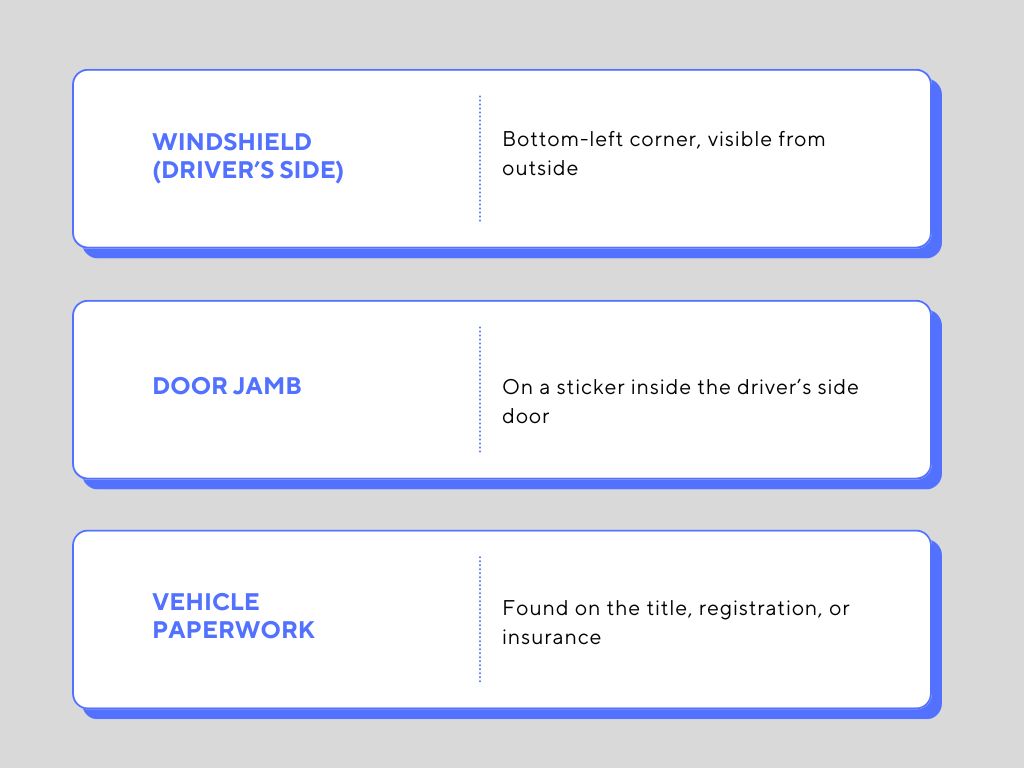Buying a used Subaru WRX or STI can be thrilling—turbocharged engines, rally DNA, and aggressive styling make them a favorite among enthusiasts. But with great performance comes potential risks, especially when it comes to modified or misrepresented vehicles.
If you’re serious about making a smart purchase, running a Subaru VIN check is essential.

Why a VIN Check Is Critical for Performance Subarus
Subaru WRX and STI models are magnets for performance upgrades. While mods can enhance the thrill, they can also hide issues if done improperly.
A simple VIN check can reveal:
✅ Whether the car is a real STI or a base WRX with badging upgrades
✅ If the transmission, engine, or turbo has been replaced
✅ Accident history that could affect the vehicle’s structure or resale value
✅ Title branding such as salvage or rebuilt status
✅ Odometer inconsistencies or rollback attempts
[porto_blockquote]📌 Pro Tip: Always match the VIN on the dashboard and door jamb. If they don’t match, walk away.[/porto_blockquote]
Where to Locate the VIN on a WRX or STI

Once you have it, you can plug it into a VIN check service. If you’re shopping used, it’s also a good idea to read our article on what to check before buying a used car for more insights.
What You’ll Learn from a Subaru VIN Report
Let’s say you’ve got the VIN and run a report. What should you focus on? Here are the essentials:
1. Factory Trim Level & Engine Specs
WRX and STI trims may look similar at a glance, but under the hood they’re very different. The report should confirm whether the car was originally manufactured as a WRX or STI. Some sellers badge a WRX to look like an STI—same hood scoop, same wing, but not the same drivetrain.
🟥 Red Flag: If the VIN shows it’s a WRX but the seller claims it’s an STI, it’s likely a rebadged base model.
To learn the differences in more detail, visit our Subaru model-specific VIN check guide for trims like Outback, Forester, and Impreza.
2. Title Status & Previous Accidents
Performance cars are sometimes driven hard—and not always responsibly. A VIN report can show if the car has been in any major accidents, had airbags deployed, or was declared a total loss at any point. Look out for title branding such as “salvage,” “rebuilt,” or “flood damage.”
Even if a rebuilt STI seems like a good deal, know that resale value, insurability, and safety may be compromised.
If your VIN report shows a denied warranty claim or unexpected title history, see our resource on how to handle a denied car warranty claim.
3. Ownership & Maintenance History
How many people have owned the car? Has it been regularly serviced? A Subaru WRX or STI with one or two owners and a full service history is usually a safer bet than one with six owners in ten years and spotty records.
Also, review the state or region where the car was registered. Cars from snowy climates might have rust or salt corrosion issues, especially on the undercarriage.
🔧 If available, ask for receipts on services, upgrades, or major repairs.
Can a VIN Check Spot Aftermarket Mods?
This is where things get tricky.
Most VIN check services only report the original equipment and manufacturer-installed options. They won’t list mods like:
- Aftermarket turbos or intercoolers
- Custom exhausts
- Tuned ECUs or Cobb Accessport installations
- Coilover or air suspension setups
However, if major engine or transmission swaps have been done and registered with the DMV, these might show up. Some insurance records also note non-OEM repairs after major accidents.
For more info on what warranties may or may not cover when modifications are involved, you can check our article on what your manufacturer’s car warranty really covers.
Still, to verify mods, you’ll need to:
- Ask the seller for receipts and documentation
- Visually inspect the engine bay and suspension
- Bring a mechanic or Subaru specialist for a pre-purchase inspection
Quick VIN Check Checklist for WRX & STI Buyers
Here’s a simple reference list before buying:
| What to Check | Why It Matters |
| VIN matches on dash and door jamb | Ensures the car isn’t stolen or rebuilt with swapped tags |
| VIN report confirms trim (WRX vs STI) | Verifies it’s not a rebadged model |
| Title is clean, not salvaged | Salvage cars can be unsafe and hard to insure |
| No record of major accidents | Frame damage can affect handling and safety |
| Service and ownership history | Fewer owners = less abuse; service shows maintenance habits |
| Any documented modifications | Know what you’re buying—and if it’s legal in your state |
Case Example: Real WRX or Rebaged WRX?
One buyer ran a Subaru VIN number check on a 2015 STI listed at a suspiciously low price. The report revealed it was originally a base WRX with a CVT transmission—rebadged with STI logos and upgraded wheels. There was no record of the STI’s 6-speed transmission, Brembo brakes, or 2.5L turbo. The car also had a prior salvage title. The buyer walked away, saving thousands in potential repair costs and future headaches.
Final Thoughts
Whether you’re looking for a weekend warrior or your daily dose of boost, don’t skip the Subaru check VIN step. The WRX and STI are serious performance machines—and serious investments. By taking the time to run a VIN report, you’ll protect your wallet, your safety, and your love for Subaru.
So before you buy, check Subaru VIN records from a trusted source and go in with eyes wide open.